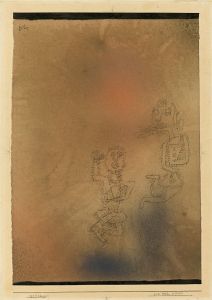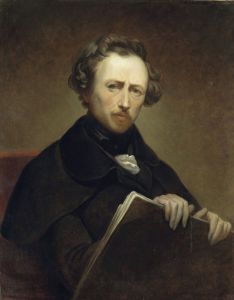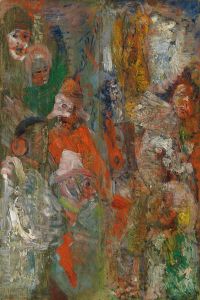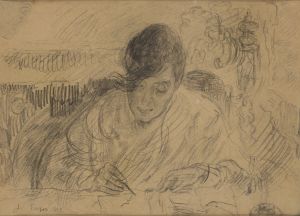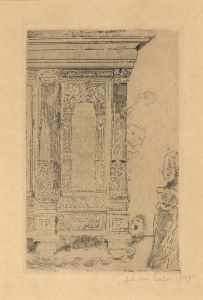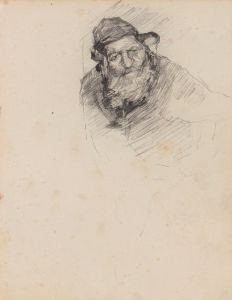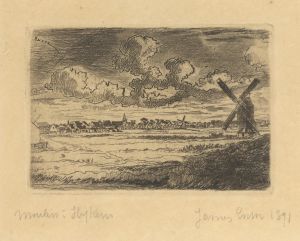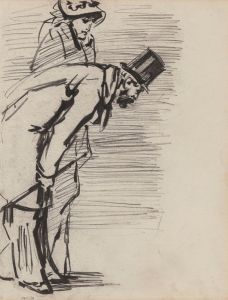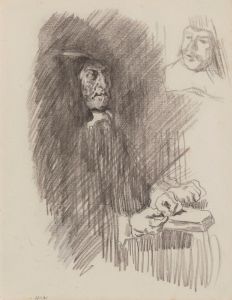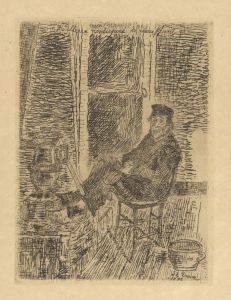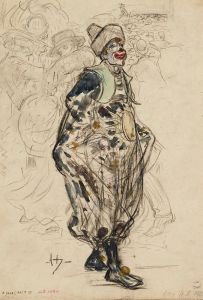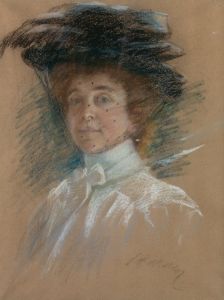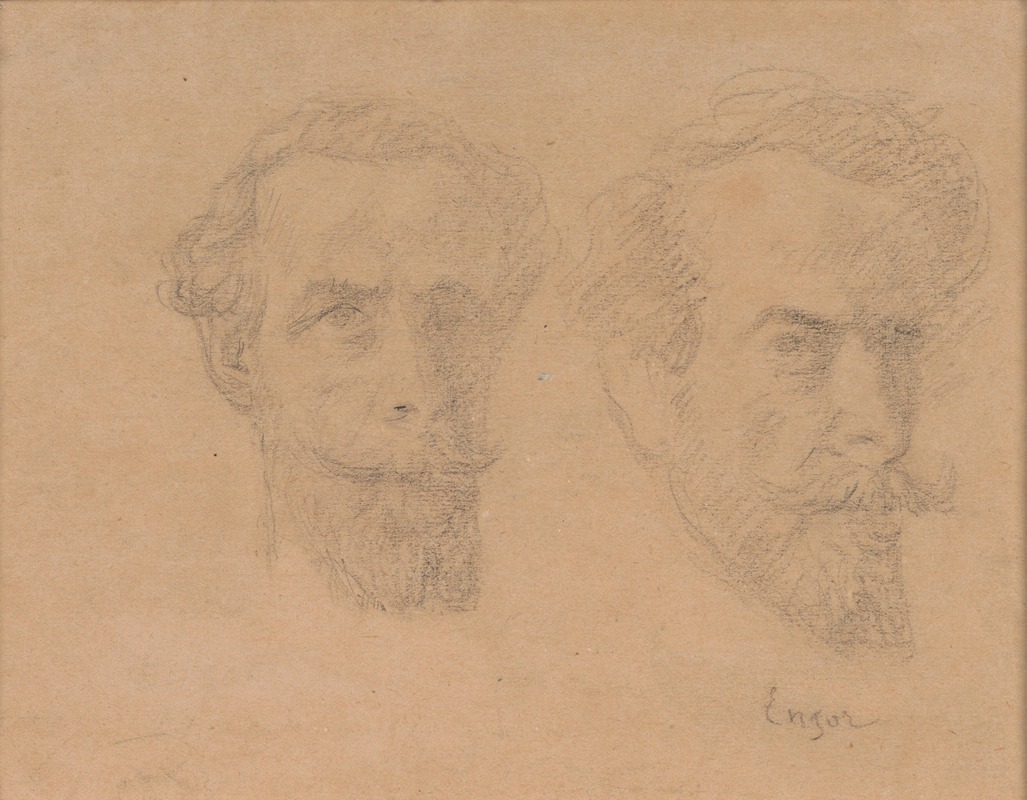
Double Self Portrait
A hand-painted replica of James Ensor’s masterpiece Double Self Portrait, meticulously crafted by professional artists to capture the true essence of the original. Each piece is created with museum-quality canvas and rare mineral pigments, carefully painted by experienced artists with delicate brushstrokes and rich, layered colors to perfectly recreate the texture of the original artwork. Unlike machine-printed reproductions, this hand-painted version brings the painting to life, infused with the artist’s emotions and skill in every stroke. Whether for personal collection or home decoration, it instantly elevates the artistic atmosphere of any space.
James Ensor, a prominent Belgian painter and printmaker, is known for his innovative and often provocative works that explore themes of identity, mortality, and the absurd. One of his intriguing pieces is "Double Self Portrait," a painting that exemplifies his unique style and thematic concerns.
"Double Self Portrait" was created during a period when Ensor was deeply engaged in exploring the complexities of self-identity and the human condition. Ensor was born in 1860 in Ostend, Belgium, and spent much of his life there. His work is often associated with the Symbolist movement, although it also contains elements of Expressionism and Surrealism. Ensor's art frequently features masks, skeletons, and fantastical elements, reflecting his interest in the grotesque and the theatrical.
In "Double Self Portrait," Ensor presents two versions of himself, a concept that allows for a multifaceted exploration of identity. This duality can be interpreted as a reflection on the different personas that individuals present to the world and the inner self that remains hidden. Ensor's use of vibrant colors and bold brushstrokes is characteristic of his style, which often combines a sense of whimsy with darker, more introspective themes.
The painting is notable for its psychological depth and complexity. Ensor's portrayal of himself in two different guises invites viewers to consider the nature of self-perception and the masks people wear in society. This theme of duality is a recurring motif in Ensor's work, as he often depicted himself in various roles and costumes, blurring the lines between reality and imagination.
Ensor's fascination with masks and the theatrical is evident in "Double Self Portrait." Masks are a common element in his oeuvre, symbolizing the facades people adopt and the hidden truths beneath them. In this painting, the dual self-portraits may suggest a dialogue between the artist's public persona and his private self, or perhaps a commentary on the fluidity of identity.
Throughout his career, Ensor was known for his unconventional approach to art and his willingness to challenge societal norms. His work was not always well-received during his lifetime, as it often defied the artistic conventions of the time. However, Ensor's influence on modern art is undeniable, and he is now celebrated as a pioneer who paved the way for future generations of artists.
"Double Self Portrait" is a testament to Ensor's innovative spirit and his ability to capture the complexities of human identity. The painting remains an important work in the study of Ensor's art, offering insight into his unique perspective and the broader cultural and artistic movements of his time. Today, James Ensor is recognized as a key figure in the development of modern art, and his works continue to inspire and provoke thought among audiences worldwide.





